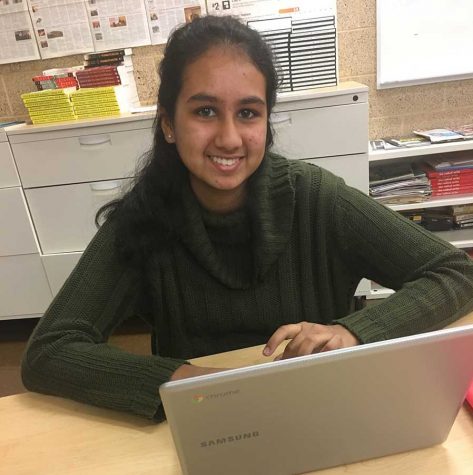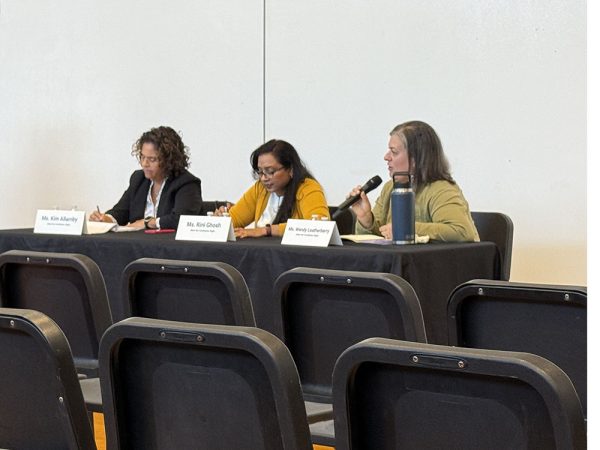Beachwood Celebrates 80% Solar Eclipse
“The eclipse will be at its peak in five minutes,” a voice echoed through the speaker and across the bleachers.
With specialized glasses shielding their eyes from the blinding light, students and staff gazed up, some filing onto the field to get a better view.
Nothing was visible through the dark lenses except the bright circle in the sky that was quickly being covered by a dark shadow.
Students from the high school and middle school came together at the Bison stadium on Monday, Aug. 21 to witness the 80% partial solar eclipse.
Science teacher Karla Seery explained that a solar eclipse occurs as the moon and sun line up. The moon then blocks part of the sun and causes a shadow. In a total eclipse, the moon blocks the sun entirely, while a partial eclipse results in the crescent shape visible on Monday.
The peak of the eclipse occurred around 2:30. At this time only a thin crescent could be seen, and the sky appeared slightly darker as a result of the moon’s shadow, which slowly moved away after a few minutes.
Senior Kelly Chiang felt the assembly provided students a unique astronomy lesson.
“Many of us have never experienced [a solar eclipse] before…It’s a very cool opportunity,” Chiang said. “It’s a different experience beyond the classroom…You actually get to go out and see it.”
Sophomore Stephanie Yen enjoyed the experience but would have liked to see the full solar eclipse.
“It was a new experience because I have never seen it before, but I think it would have been really cool if we were in the path of totality.”
Junior Abby Bendis described the event as being a way to bring the community together.
“I like when we do things as a big school [and] as a community,” she said. “It just brings us closer and [increases] Bison spirit.”
Seery explained that there is not a consistent amount of time between each solar eclipse, but scientists are able to calculate when each one will occur.
“We [will] have another one in seven years that’s when there is going to be [a] full eclipse in Cleveland,” Seery said. “But after that [it will be] a very, very long time; they are rare.”

Prerna Mukherjee has been writing for The Beachcomber since the fall of 2016. She covers a variety of school and community events. In her free time, Prerna...






![“My parents have always said that education is important. My parents are Chinese immigrants, I'm Chinese American, [and that's a] value that has always been ingrained in our community,” said Senior Lyndia Zheng, pictured with Tony Zheng](https://bcomber.org/wp-content/uploads/2025/10/DSC_4244-600x400.jpg)




